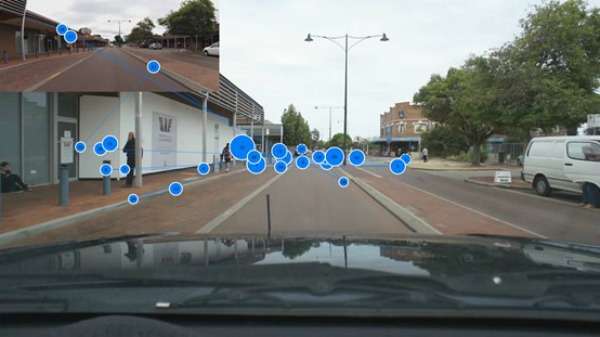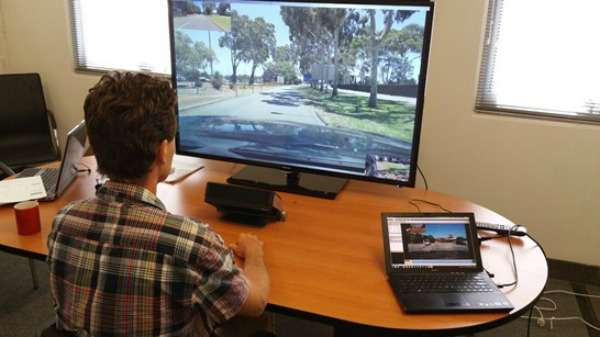Eye tracking technology makes for safer drivers

Advanced eye tracking technology applied to driver training by a Perth company is improving drivers' hazard perception skills.
The technology, developed by Edith Cowan University, has previously been used to train paramedics to assess risks in highly hazardous scenarios like attending an unconscious patient in a crowded nightclub.
However, Shawsett Safety and Training managing director Steve Shaw says the technology has never before been used to train drivers and will result in massive reductions in driver training course duration from three weeks to three hours.
The system is the result of an international search Mr Shaw undertook to find better driver training methods.
The search ended with CSIRO's SME Engagement Centre and a connection to Edith Cowan University Associate Professor Owen Carter.
A/Prof Carter says the eye tracking technology works through a large, high definition television screen (giving 120 degree vision), with a series of eye tracking cameras at the bottom.
Visual tracking reveals that at an intersection expert drivers will flick a glance at the car ahead then keep an eye on it in their peripheral vision but are fixating on other potential areas of risk.
They will look as far down the road as they can to anticipate vehicles, whereas novices only attend to their immediate area and vehicles just arrived at the intersection.

A/Prof Carter says good results were immediately evident when ten Rio Tinto staff who had undergone the visual tracking driver training were compared to ten who had no training.
"The untrained group visually fixated mainly upon the traffic in front of them in the middle of the road while the trained group practiced significantly more visual scanning for hazards ahead and to the left and right of the road," A/Prof Carter says.
"The significance of this research was two-fold; it confirms that drivers' visual scanning behaviours can be trained rapidly using simulation and eye-tracking enhanced methods.
"It also demonstrated that this learning transferred directly to actual driving behaviours in real life.
"The important thing is, we can teach drivers a whole lot of visual scanning techniques just while they are staring at a TV screen in an office."
Previously, the preferred training method for drivers was on the road, using 'think aloud commentary' where the driver describes what they are seeing but Mr Shaw says it's time consuming and the commentary can be distracting.
Shawsett is seeking investment to make the eye tracking research software more commercially viable.
Provided by Science Network WA



















